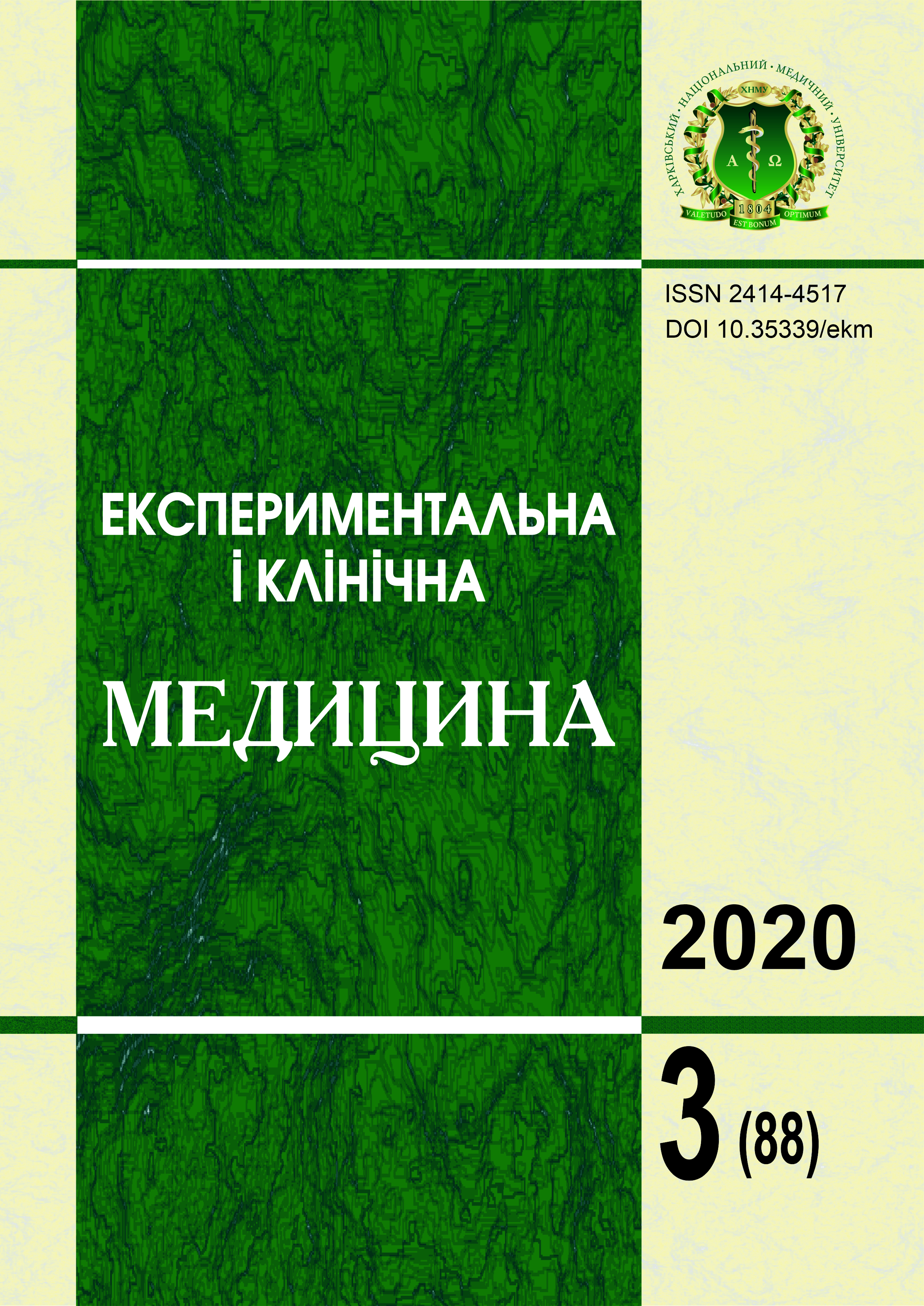Abstract
The results of the features of the preoperative (initial) state of the cells of the walls of the pancreatic pseudocysts before the onset of laser radiation and the state of biopsy specimens after laser vaporization were evaluated. This work is based on the results of examination and surgical treatment of 28 patients with pancreatic pseudocysts using, who were divided into two clinical groups. The main group was represented by 12 (42 %) patients who were operated on with the use of percutaneous drainage of the cyst cavity using laser vaporization. The comparison group consisted of 16 (57 %) patients operated on by traditional methods and without the use of laser vaporization. The main surgical techniques of intraoperative use of percutaneous puncture laser vaporization of the pseudocyst wall with external and internal drainage are presented. Based on the results of the morphological analysis of the dynamics and intensity of acute reactive inflammation, it was found that when using the laser vaporization method, the postoperative period and the healing process are faster and more efficient than when using standard open methods of surgical treatment of pancreatic pseudocysts. Laser vaporization is a more effective method of minimally invasive surgical treatment, which immediately allows you to quickly form a thin, dense scab, not only effectively stops bleeding and has a protective function, but also minimizes the intensity of acute reactive inflammation in adjacent tissues. When using laser vaporization, the zones of necrosis and necrobiosis are significantly reduced.
Keywords: pancreatic pseudocysts, percutaneous drainage, minimally invasive treatment, laser radiation, laser vaporization.
References
Marcus D. (2009). Chronic Pain: A Primary Care Guide to Practical Management. University of Pittsburgh, School of Medicine, 134 p.
Nealon W.H., Walser E.M. (2003). Duct drainage alone is sufficient in the operative management of pancreatic pseudocyst in patients with chronic pancreatitis. Arch. Surg., vol. 5, pp. 614-622.
Baron T.H., Morgan D.E. (1999). Endoscopic transgastric irrigation tube placement via PEG for debridement of organized pancreatic necrosis. Gastrointest Endosc., vol. 50, pp. 574-577.
Connor S., Raraty M.G., Howes N. et al. (2005). Surgery in the treatment of acute pancreatitis - minimal access pancreatic necrosectomy. Scand J Surg., vol. 94, pp. 135-142.
Gagner M. (1996). Laparoscopic treatment of acute necrotizing pancreatitis. Semin Laparosc Surg., vol. 3, pp. 21-28.
Horvath K.D., Kao L.S., Ali A. et al. (2001). Laparoscopic-assisted percutaneous drainage of infected pancreatic necrosis. Surg Endosc., vol. 15, pp. 677-682.
Horvath K.D., Kao L.S., Wherry K.L. et al. (2001). Atechnique for laparoscopic-assisted percutaneous drainage of infected pancreatic necrosis and pancreatic abscess. Surg Endosc., vol. 15, pp. 1221-1225.
Lee M.J., Wittich G.R., Mueller PR. (1998). Percutaneous intervention in acute pancreatitis. Radiographics., vol. 18, pp. 711-724.
Kebkalo A.B., Gordovsky V.A., & Reiti A.O. (2016). Zastosuvannyaminiinvazyvnykh endoskopichnykh drenuyuchykh vtruchan pid kontrolem ultrasonohrafiyi u khvorykh na hostryy nekrotychnyy pankreatyt [The use of minimally invasive endoscopic drainage interventions under the control of ultrasonography in patients with acute necrotic pancreatitis]. Promeneva diahnostyka, promeneva terapiya - Radiation diagnostics, radiation therapy, vol. 3-4, pp. 63-68 [in Ukrainian],
Seewald S., Groth S., Omar S., et al. (2005). Aggressive endoscopic therapy for pancreatic necrosis and pancreatic abscess: a new sale and effective treatment algorithm (videos). Gasiminlesi Endosc., vol. 62, pp. 92-100.
Chamley R.M., Lochan R., Gray H., et al. (2006). Endoscopic necrosectomy as primary therapy in the management of infected pancreatic necrosis. Endoscopy, vol. 38, pp. 925-928.
Windsor J.A. (2007). Minimally invasive pancreatic necrosectomy. Br J Surg, vol. 94, pp. 132-133.

